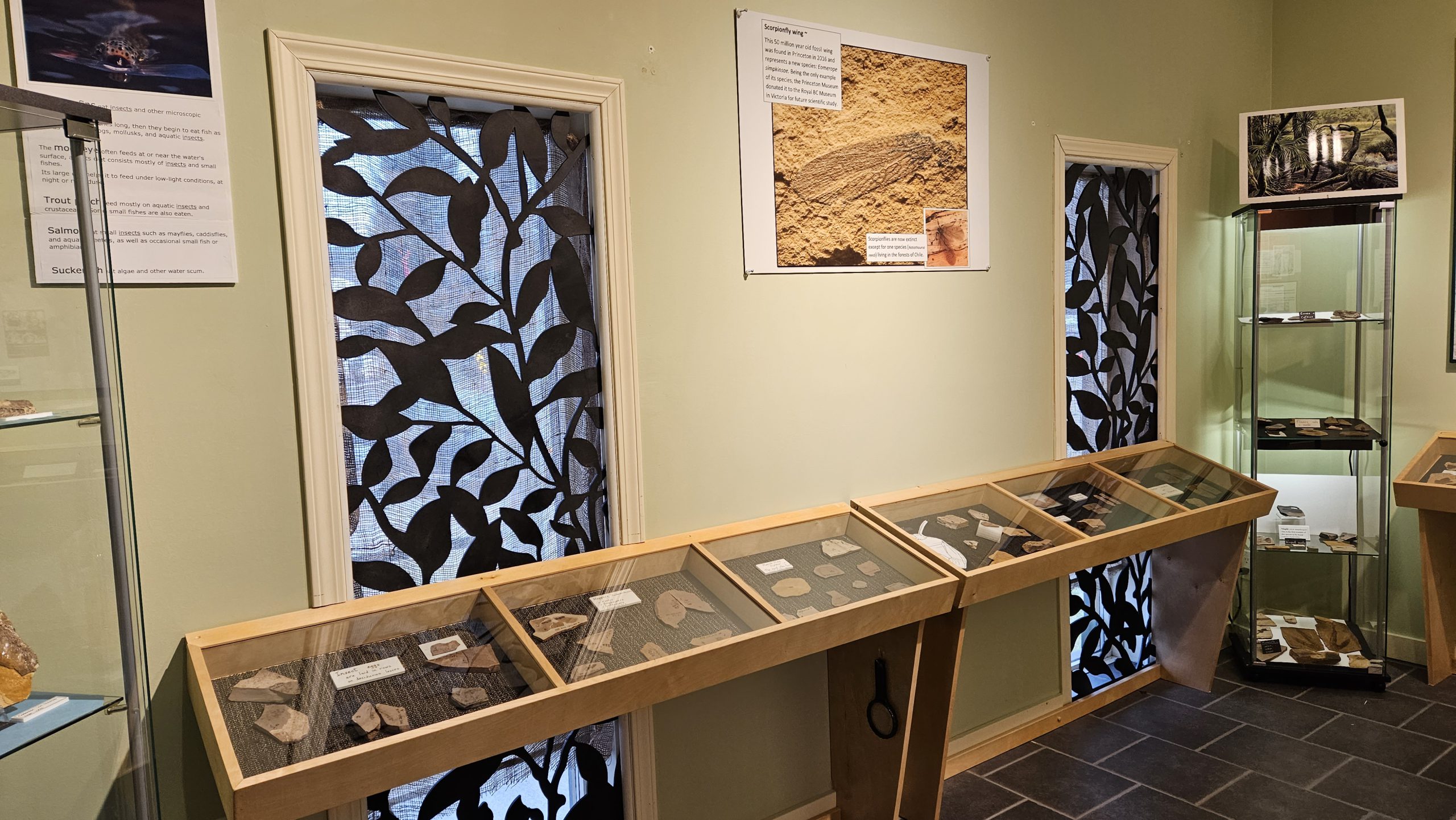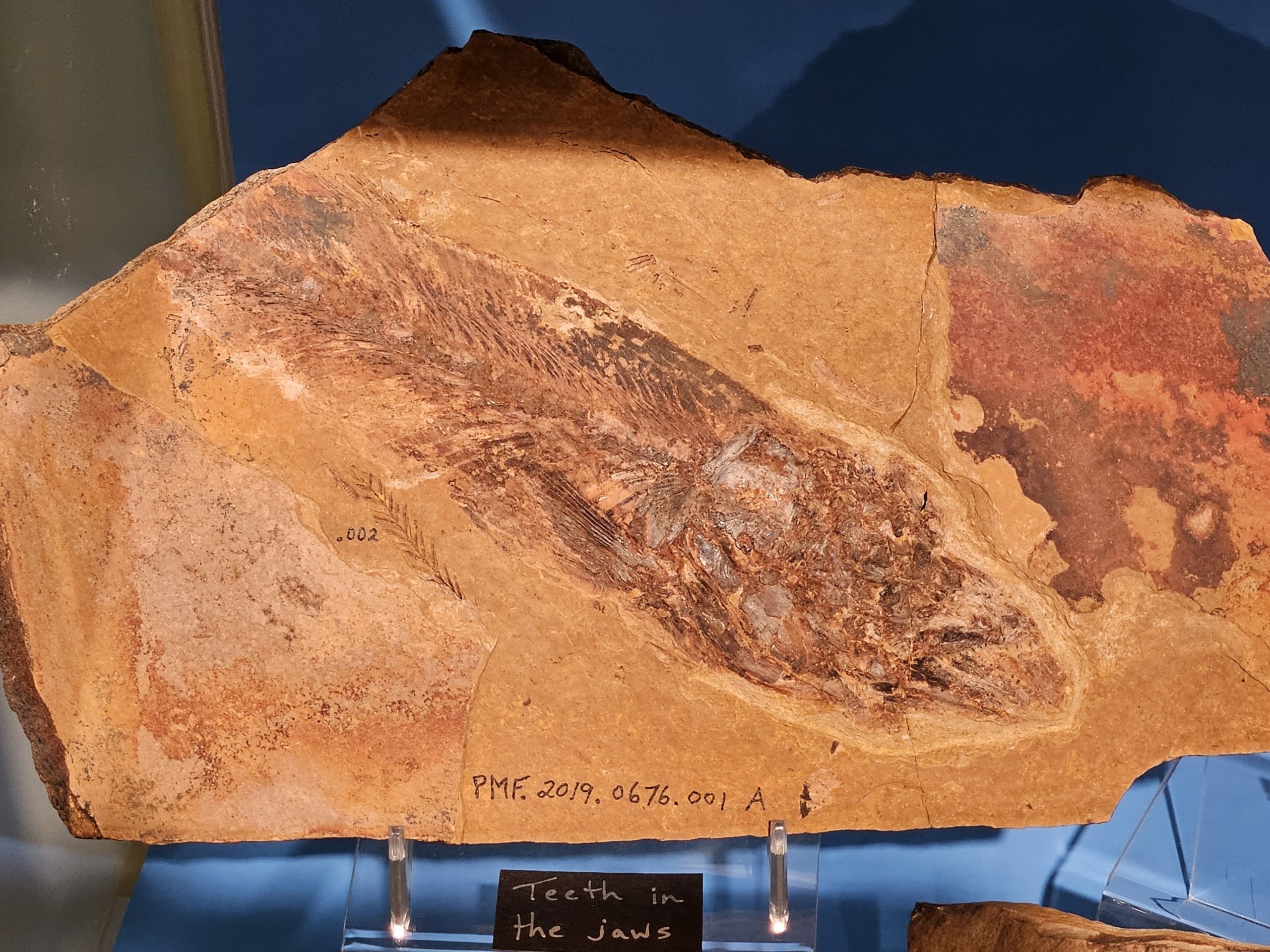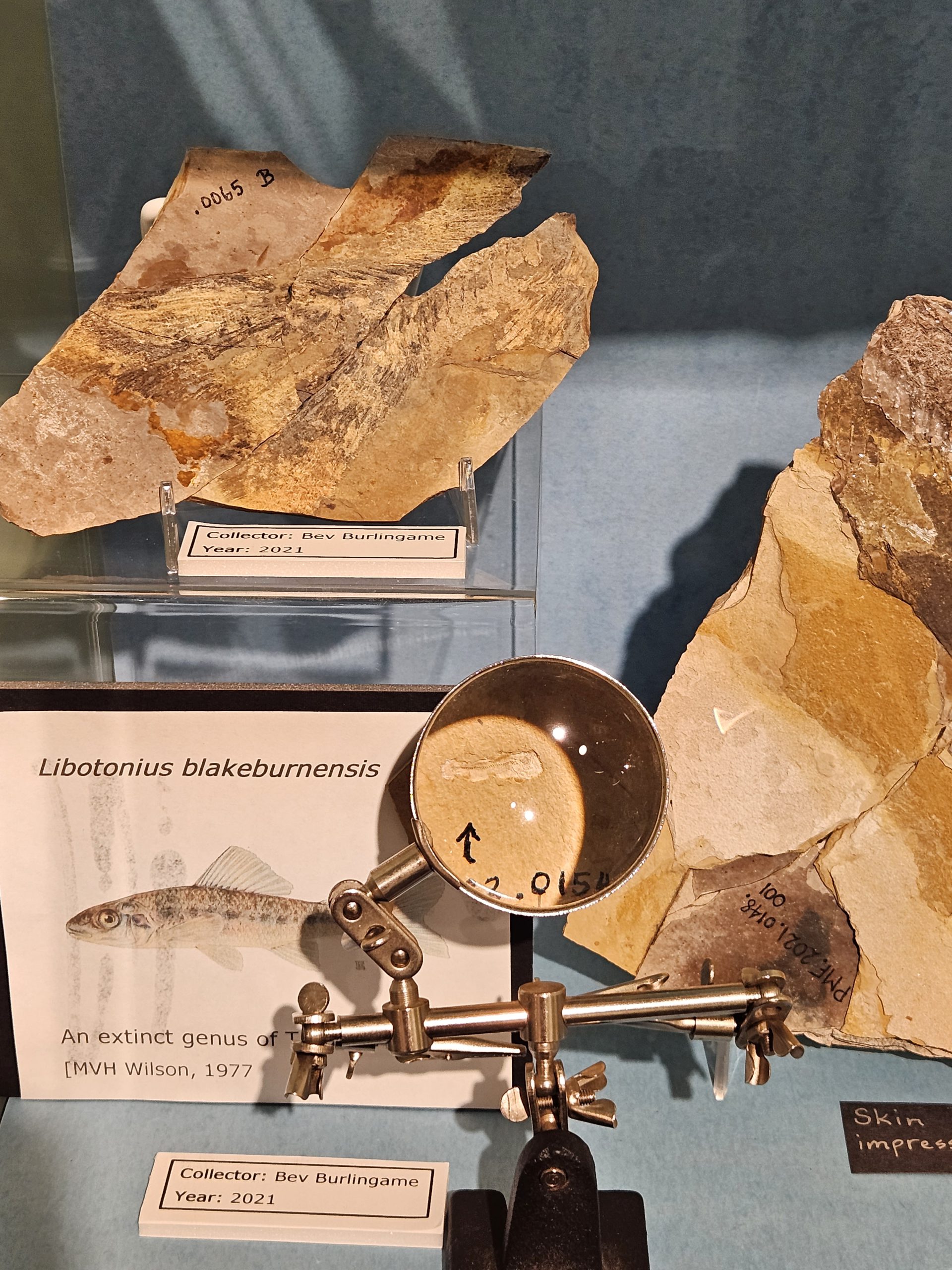The Past.
The ocean was slightly closer to B.C., and the Cascade Mountain range had yet to form, resulting in a warmer climate despite being at a higher elevation. This gave an interesting mix of birch and pine along with sassafras trees and palm-like trees.
The fossils range from around 50 million years ago. Some are now extinct, while others have relatives living elsewhere in the world, but no longer in B.C.
They are Eocene fossils, so after the age of dinosaurs, but not long after. The rock around Princeton is 50 to 51 million years old, and the dinosaurs died out 65 million years ago.
The Present
The Museum currently homes about 4000 fossils, and is made up from numerous types of donors, from collections such as the Pollard and Wehr Collections to individual donations from local enthusiasts. There has been a number of Fossil Firsts or rare types found by Princeton locals and most of these have been loaned or donated by the Museum to higher research centers for further study


The Future
The Museum will always continue to receive fossil donations of any size and our expert volunteers will evaluate them accordingly. Exhibitions and displays are changed often so we can show off our vast collection. Moving forward the Museum will hopefully be able to digitize the complete collection and so be able to make it available to the widest audience possible.
